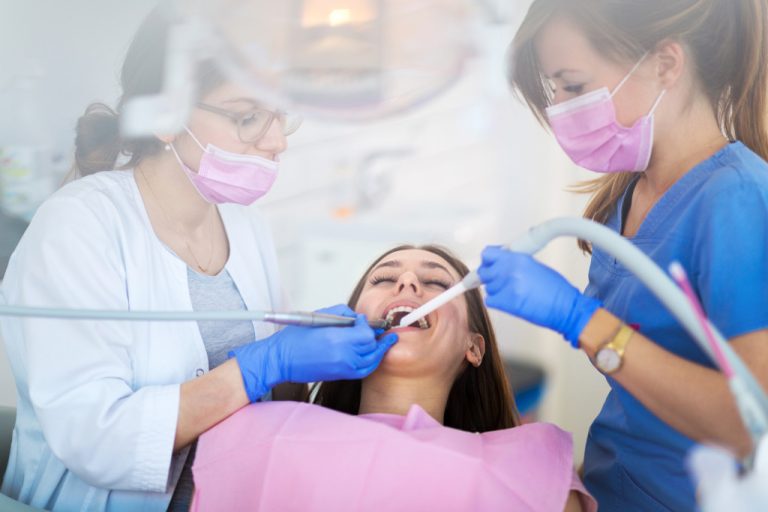Dental technology is constantly changing and evolving. It only means that dentists must continuously update their knowledge and skills to provide the best possible care for their patients.
According to new research from Grand View Research, Inc., the worldwide dental service market is anticipated to reach $554.5 billion by 2028. It is projected to expand at a CAGR of 6.4% over the next decade, from 2021 through 2028. Because of the industry’s continuing marketing efforts to expand dental practices, the market has maintained a stable trajectory of development.
New techniques and materials are continually being developed, and it can be challenging to keep up with the latest advancements. However, dentists must stay up-to-date on the newest technology to provide the best possible care for their patients.
Here are eight dental technologies that are changing the industry:
Telemedicine
Telemedicine is a rapidly growing field that is changing how healthcare is delivered. It allows patients to consult with their dentist or another healthcare provider from the comfort of their own home using video conferencing technology.
During the pandemic, dental services were halted. However, thanks to telemedicine, many dental practices were able to continue providing care to their patients. This technology has also allowed dentists to reach new patients who may not have access to dental care, which will continue to stay in the long run.
Digital X-rays
Digital x-rays are becoming more and more common in dental offices. They use less radiation than traditional x-rays and provide a clearer image for the dentist to examine. This helps the dentist make a more accurate diagnosis and develop a treatment plan tailored to the individual patient.
This is also more convenient for patients. They can be sent electronically to other dental offices or specialists, making it easier to get second opinions or receive treatment from another dentist if necessary.
CAD/CAM Technology
CAD/CAM (computer-aided design/computer-aided manufacturing) technology is increasingly used in dental offices. This technology can create custom dental crowns, veneers, and inlays/onlays.
The dentist will take an impression of the patient’s teeth and then use the CAD/CAM machine to create a custom restoration perfect for the patient’s smile. This technology allows for a more accurate fit and a quicker turnaround time for the repair.

Intraoral Cameras
An intraoral camera is a small, hand-held camera used to take pictures of the inside of the mouth. This gives the dentist a close-up view of the teeth and gums and helps detect problems that may not be visible to the naked eye.
This is a painless and non-invasive way to look closely at the mouth. It is also much easier for patients to see what the dentist sees, which can help them better understand their treatment options.
Dental Implants
Dental implants are metal posts placed surgically into the jawbone to support dental restoration for patients. In the dental field, these are also known as titanium dental implants, and dental health professionals use this material to replace one or more missing teeth.
American Association of Oral and Maxillofacial Surgeons provided statistics that show that by the age of 74, 26% of adults have lost all their permanent teeth. It just reveals that about 100,000-300,000 dental implants are placed annually.
The call for innovation is not just to follow the trend; the demand is so high we need to keep up. Dental implants are changing the industry because they provide a more permanent solution to tooth loss than dentures or bridges.
Invisalign
Invisalign is a popular alternative to traditional braces. It is a clear aligner that is virtually invisible. It is also removable, making it more comfortable for patients and easy to keep clean. Invisalign is very popular with adults because it is less noticeable than braces. It is also a convenient option for people who do not want to deal with the inconvenience of traditional braces but wants to straighten their teeth.
HealOzone
HealOzone is a new technology that is being used to treat cavities. It uses ozone gas to kill the bacteria that cause cavities. HealOzone is quick and easy. The treatment only takes a few minutes and requires no anesthesia or drilling. This makes it an excellent option for people who are afraid of the dentist or have a fear of needles.
CEREC technology
CEREC technology allows dentists to create custom dental restorations right in their offices. This eliminates the need for impressions and dental lab time. CEREC restorations are made from a solid block of ceramic material. This material is matched to the patient’s tooth color and then shaped to fit the patient’s tooth. The restoration is then bonded to the tooth, and the patient can leave the office with a new, beautiful smile.
All in All
Dental technology is constantly evolving, and dentists who want to stay ahead of the curve must continuously learn about the latest innovations. Giving the best care for all their patients requires using the best technologies available. We can now look forward to even more remarkable developments in dental technology in the years to come.

